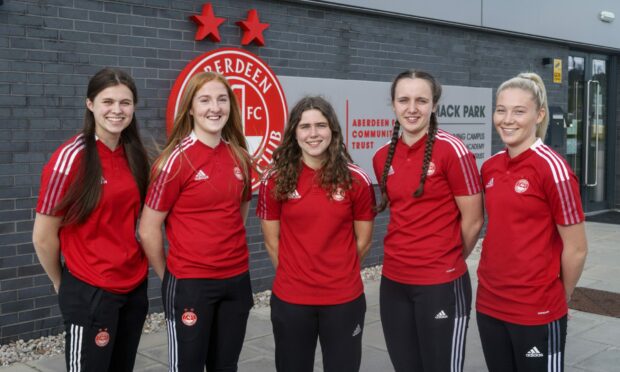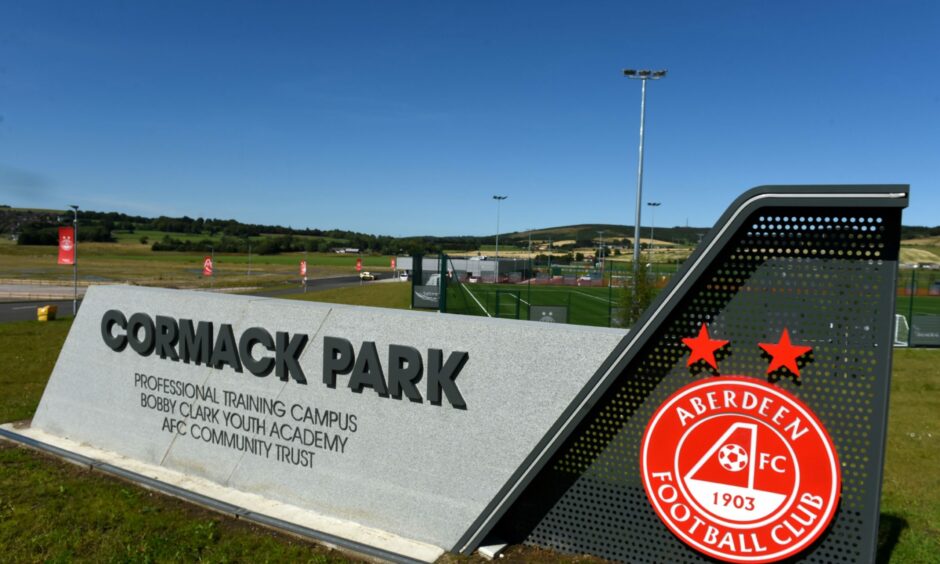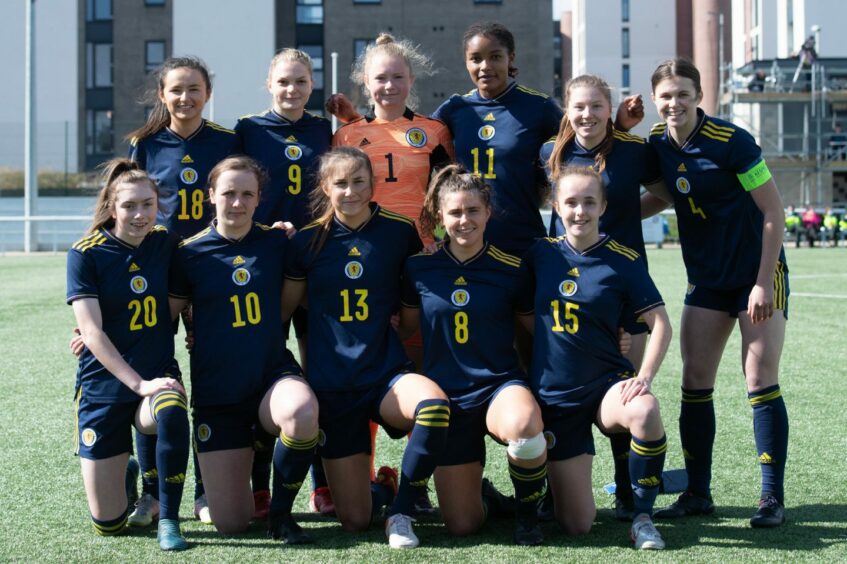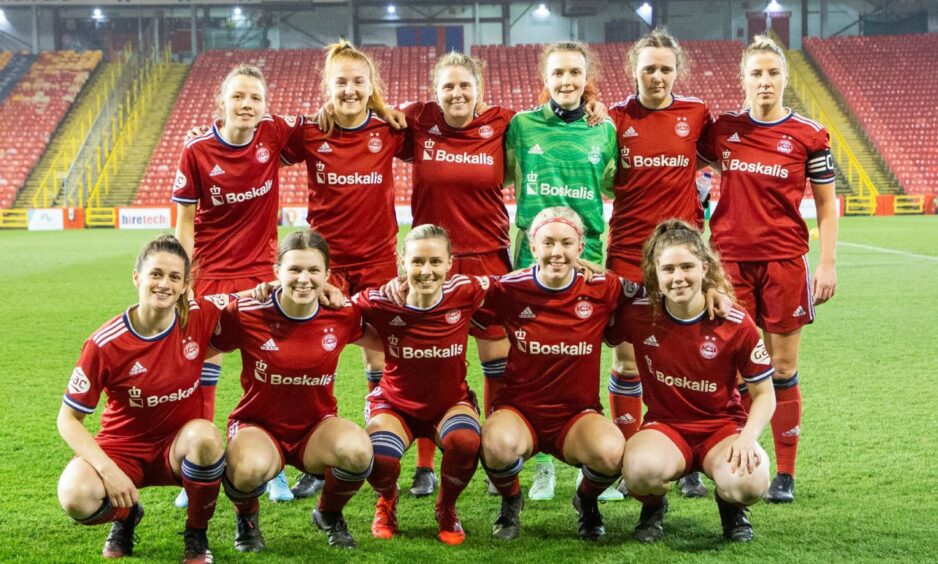Aberdeen academy director Gavin Levey has revealed the next steps for the women’s side after their landmark move to a semi-professional status.
Earlier this month the club announced that Bayley Hutchison, Jess Broadrick, Eva Thomson, Eilidh Shore and Francesca Ogilvie would be the first female players at Aberdeen to be put on paid semi-pro contracts.
The club’s route towards semi-professional women’s football was part of a wider development and investment plan that has been in the works since Aberdeen took over the women’s team in 2018.
That plan depended on success on the pitch, and after being taken over, Aberdeen Women won back-to-back titles and, in 2021, achieved promotion back to the top-flight after a three-season absence.
Upon their return to SWPL 1, the Dons finished in fifth-place, which Levey said was vital in accelerating the plans towards a semi-pro status, as he said: “This model is very much a model that relates to playing football in the top-flight.”
With preparations under way for the 22/23 season, Levey spoke to The Press and Journal at length about why the club decided to go semi-professional and what that has entailed so far.
Why has the club gone semi-professional?
The Dons will be one of seven teams in the league next season to have players on professional or semi-professional contracts, but Levey insists that the Dons going semi-pro isn’t just them following the crowd.
He insists the decision was made with Aberdeen’s best interests at heart, and believes that the club have the right plans in place to ensure that the ongoing process is a smooth transition.
Levey said: “We’re backing what we believe in, and we see ourselves having the players, the staff and the infrastructure here which will see us continue to perform and hopefully go on and achieve more in times to come.
“We’ve got to be smart. We have a financial model in place here and it’s not like we’re a football club – in any department – that can just throw loads of money.
“We have to be very careful how we do it and so far it’s been a step-by-step process, but so far those steps have been very big for us.
“We’ve got to manage the process very carefully and do it at the right time to make sure that we’re in control of this situation.”
Another huge step forward for @AberdeenWomen and an exciting time for aspirational young footballers in the North East. Dreaming of becoming a female professional for @AberdeenFC could now become a reality. #StandFree 🔴⚪️ https://t.co/6S4hAxFO7D
— Gavin Levey (@GavLevey) May 6, 2022
The club has an ethos that’s geared towards developing young players and that’s no different with the women’s teams. Levey believes that securing their best young talent on paid contracts ensures their near future will be at Aberdeen.
He said: “If you think about Aberdeen FC as a whole – our aim is to be the best developers of young talent in the country and that shouldn’t be any different for the women’s team.
“It’s that consistent message that’s important and for us to keep these players at Aberdeen, we had to move forward and put in substantial investment so they can fulfil their potential.”
However, he also recognises if Aberdeen want to be one of the best developers of young talent, that also means seeing success in different ways. Many of Scotland’s best female players have sought opportunities elsewhere to further their career, with 15 out of the 23 players in the last national team squad playing outside of the SWPL.
He believes that even if players choose to leave the Dons to progress their careers in England or elsewhere, the club has fulfilled it’s purpose by providing them with the resources to play at a higher level.
He said: “If we’ve got young players who can use Aberdeen as a platform to build on and go and play at the highest level they possibly can – whether that be in England, going overseas or a good college scholarship – that has to be seen as a success as well.
“We’ve got to be seen celebrating successes in different ways and not just them going on to be professional footballers earning millions of pounds.”
How much investment has been made?
Since the club absorbed the women’s team in 2018, there has been substantial investment which has increased season upon season. That investment also takes the form of integrating the women’s team with pre-existing operations behind-the-scenes.
“The football club doubled our investment in the women’s team this year to play in the league that we’re playing in (SWPL 1),” Levey added.
“That doesn’t take into account all the staff time that is involved here at Aberdeen. We don’t have a separate department running our women’s squad, but we have the expertise of everyone at the football club.
“Whether that’s on the professional side, the operational side or the media – we have all the full-time staff here who are operating in the men’s team or the youth academy working in the women’s team now too.
“It’s added a lot of time and resources to the people who are working here at Aberdeen. It’s been great to have that continuity and to have good people and good decision makers involved behind-the-scenes.”
When the club announced the semi-pro contracts earlier this month, they also said that further investment would be made to “enhance operations off the field, improve standards and infrastructure.”
On a day-to-day basis, Levey says the increased investment will be reflected by more training time, better access to facilities and more off-the field support which the players will be provided with.
He said: “Moving forward the investment has been significant again.
“Not only do we have the semi-professional players; we’re committing to increasing training time, strength and conditioning time in the gym, and the sports science programme.
“They’re all going to get additional resources and funding to help them progress and be the best they possibly can. That then will hopefully give the young players in the squad the chance to go and try and become a professional here at Aberdeen.”
What are the club’s short and long-term ambitions as a semi-pro side?
Much like Rome, Aberdeen Women wasn’t built in a day – or when they put their first players on paid contracts. Levey expects things to change next season, but insists the club have to be realistic in their ambitions.
“Next year our targets have to be to build on what we’ve done next year which isn’t necessarily going to be easy just because we’ve now got five semi-professional players,” he explained.
“What’s been achieved this year has been good, but the dynamics will be slightly different next year.
“There will be a bit more expectation next year and that can lead to more pressure as well, and how people react to pressure can vary.
“Next year is not going to be easy at all. For us to try and emulate our success and by saying a top-three finish – we have to be fair and we’ve got to be realistic.
“Along with myself and the management team, we’ve got to agree on what we see as realistic, where we want to be half-way through the season, and ultimately where we want to finish.”
Like his ambitions for the men’s team, Levey hopes that providing a more professional environment for the women’s semi-pro players to develop will help boost their chances of playing for Scotland’s senior team.
All of the five players who have been put on paid contracts, have or currently play for Scotland U19’s. But for Shore, Ogilvie and Hutchison, who turns 19 in October, their immediate international future is uncertain as Scotland Women have no U21’s team.
He explained: “Looking ahead, can we then get them to break into Scotland’s first team, much like we hope for the men. We want them to kick on and represent our country and qualify for the major tournaments.”
“Hopefully we can see the Scotland selectors and coaches at more games, it puts the young players of Aberdeen and in the north-east in the spotlight, and recognised for what they’re achieving.”
Levey, again, hones in on the importance of developing players, and believes that even if they make their senior Scotland bow while at another team, Aberdeen will have still played a part in that achievement.
He said: “Even if it needs to be that our players start here and in a few years time move on to something at a higher level, and then they represent the national team – that has to be a success for us too.
“We’ll have played a part in their development and that’s what we want to do.”
Is there a timeline to go professional and full-time?
The move to semi-professional was three years in the making, so what will the next three years hold for Aberdeen Women?
Levey has said there is no concrete plans to move to full-time professional football, and while not explicitly ruling it out, the priority will be to evaluate and consolidate the club’s semi-pro development.
He said: “To be quite honest – no, there isn’t a timeline for that. We just really need to see where we are and how we develop.
“Because this is still new to us – three years in – we just need that time to see where we are and how the game develops.
“Whilst it’s not in the immediate plans, time is really important for us because we want to see where the women’s game goes.”
Levey added: “We need to look at how much investment is coming in and how much exposure is going to come into the women’s game.
“It’s an exciting time, of course, but we have to be calculated in how we operate.
“We’re not going to go down the route of changing a model or having a plan in place when we don’t know how things are going to develop.”



